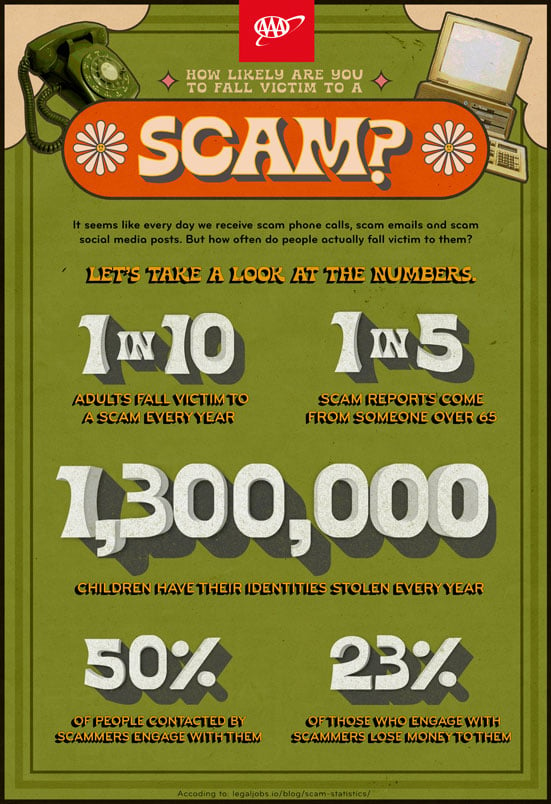A Guide to Avoiding Email Scams
Four simple tips that you can start implementing today


Emails connect people worldwide, such as loved ones, potential employers, and business clients. But this powerful tool for communication can also hurt you if you’re not careful.
Sometimes, scam artists use technology like emails to solicit personal information, endangering unsuspecting victims. They may try to steal important details like your Social Security Number, bank information, account passwords, and more. Even in the day and age of technological literacy, people fall for these scammers’ tricks all the time. In fact, according to the Federal Trade Commission (FTC), more people who filed a fraud report lost money in 2020 (34%) than in 2019 (23%).
With your financial well-being on the line, it’s crucial that you learn how to protect yourself. Here is a guide to help you avoid future email scams.

How do I avoid email scams?
While email scams, sometimes called phishing scams, can be tricky, they’re not impossible to avoid. Practice internet safety and learn these practices to protect your information:
-
- Avoid posting your email address online
along with other personal details. -
- Verify links before clicking
by checking the actual link information coded into the HTML. -
- Call the company
the email claims to represent to validate its legitimacy. -
- Filter spam
out of your mailbox. -
- Install antivirus software
and update it regularly. -
- Use multi-factor authentication
on your various accounts. -
- Be careful
and treat any emails from unknown senders with suspicion.

What are warning signs I’m getting scammed?
Scammers regularly change the tactics of their digital scams. However, there are usually some consistent signs you can look for to avoid getting tricked.
Typically, phishing emails encourage you to click a suspicious link or open an attachment. So, they try to take advantage of your excitement or fear. For example, a phishing email might:
- Claim you won something, like a vacation or money.
- Say you’re due for a government refund.
- Threaten you for overdue payments.
- Ask you to confirm personal information.
- Include a fake invoice.
But these emails usually have some identifiers that tip you off to their scheme. To start, the greeting or tone might be off. If you notice someone addresses you strangely in the email, it’s probably a scam. In addition, you should also look at the language in the rest of the message. Spelling or grammar errors are common in phishing emails. They also include inconsistencies in links, domain names, and email addresses. So, compare emails with previous, legitimate emails to look for any changes that don’t match.

What are some of the most common types of email scams?
Email scams have been around a long time. One of the oldest ones out there, the “Nigerian prince” scam, goes all the way back to the 1990s. Unfortunately, even though it’s so well known, people still fall for it to this day. But one of the best ways to avoid email scams is to learn what they look like.
Some of the most common types of email scams include:
-
- Bogus business opportunities
that offer your money for very little work. -
- Diet and health scams
that lure you in with quick fixes or discount prices. -
- Discount software
offers that advertise cheap downloads of commercial software. -
- Fake ‘official notices’
that appear to be from government organizations, like the IRS. -
- PayPal or banking
emails with warnings about account deactivation or security breaches. -
- Survey scams
asking you for your input on current events or culture.
What do I do if I find a scam?
If these tips help you find an email scam, be sure to send it to the Anti-Phishing Working Group at reportphishing@apwg.org, as recommended by the FTC. You can also report it to the FTC itself at FTC.gov/Complaint.
